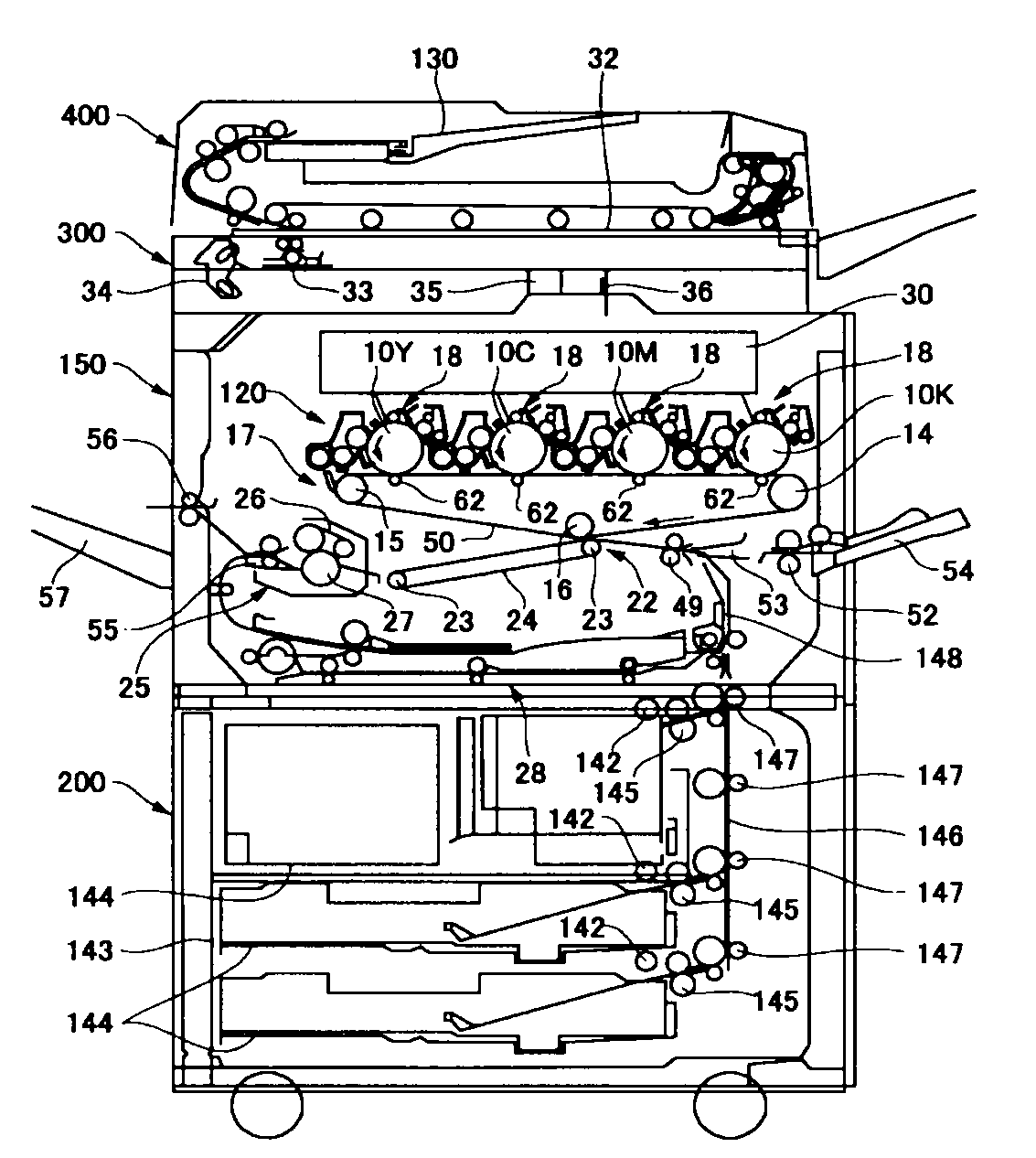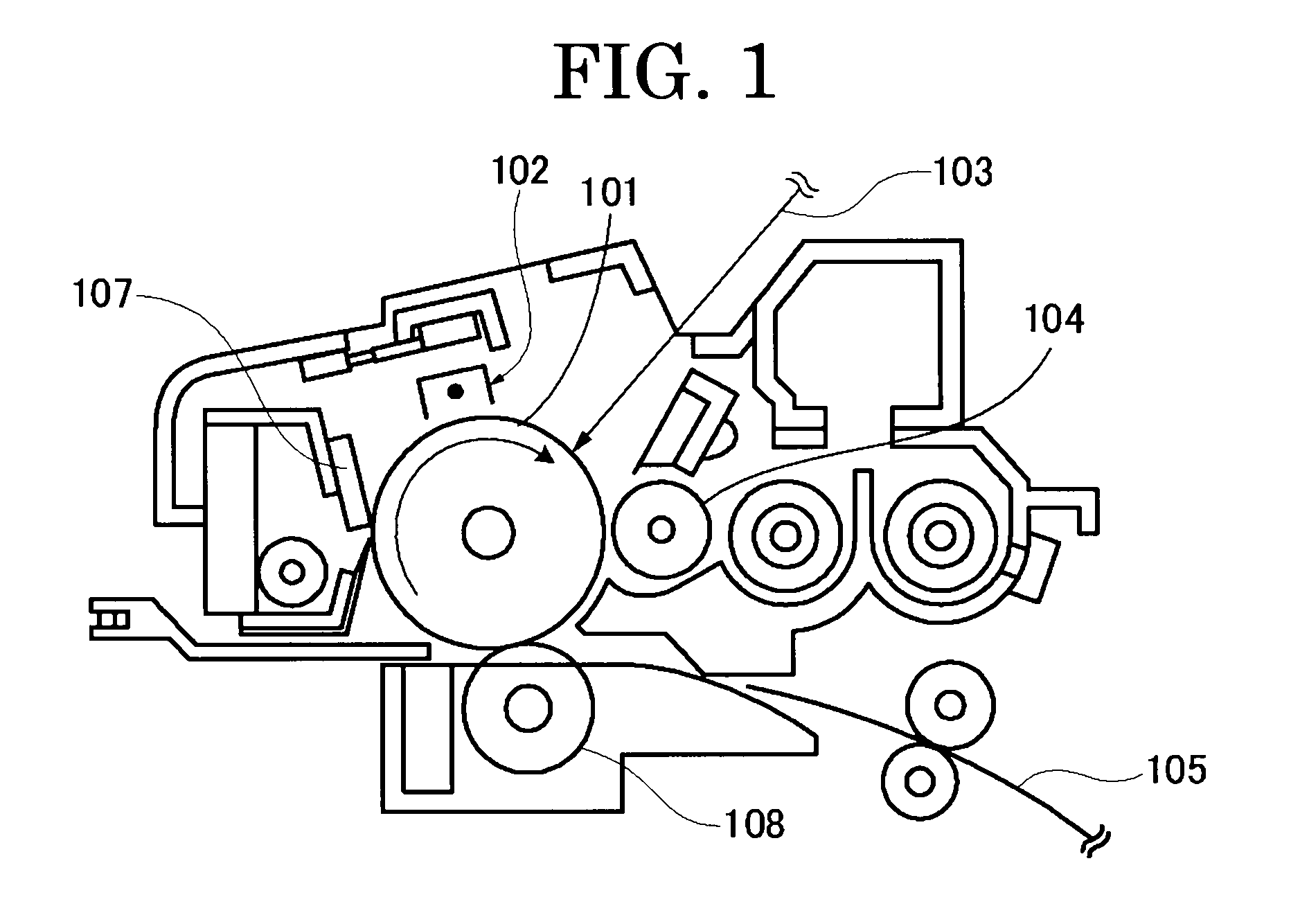Fine organic silicone particle for latent electrostatic image developing toners, external additive for toners, toner for developing latent electrostatic image, and two-component developer
a technology of organic silicone and latent electrostatic image, which is applied in the direction of electrographic process, electrographic process using charge pattern, instruments, etc., can solve the problems of insufficient shape design, difficulty in establishing a reasonable trade-off between flowability and expected function, etc., and achieve the effect of offering the expected functions
- Summary
- Abstract
- Description
- Claims
- Application Information
AI Technical Summary
Benefits of technology
Problems solved by technology
Method used
Image
Examples
example 1
Synthesis of Fine Organic Silicone Particle A
[0334]Ion-exchange water (400 g) was poured into a reaction vessel and 0.2 g of a 48% aqueous solution of sodium hydroxide was added. Into this aqueous solution, 47 g of methyl trimethoxy silane and 48 g of tetraethoxy silane were added and a hydrolysis reaction of them was performed for an hour with the reaction temperature kept at 13° C. to 15° C. Then, 1.8 g of a 10% aqueous solution of sodium dodecylbenzensulfonate was further added and a hydrolysis reaction was performed for 3 hours at the same temperature to yield a transparent reactant containing a silanol compound in a total of 4 hours. Then, the reactant thus obtained was subjected to a condensation reaction for 5 hours with the reaction temperature kept at 30° C. to 80° C. to yield an aqueous suspension containing a fine organic silicone particle. This aqueous suspension was filtered through a membrane filter, the filtrate was subjected to centrifugation to isolate white fine pa...
example 2
[0337]Following a procedure similar to Example 1, 400 g of ion-exchange water was poured into a reaction vessel, 0.35 g of a 48% aqueous solution of sodium hydroxide and 0.15 g of a 20% aqueous solution of α-(p-nonylphenyl)-ω-hydroxy (polyoxyethylene) (number of oxyethylene units=10) were added, and the resultant solution was stirred sufficiently to produce a homogenous solution. With the temperature of this aqueous solution kept at 14° C., into this aqueous solution, a monomer mixture of 31 g of methyl trimethoxy silane, 28.4 g of 3-metacryloxypropyl trimethoxy silane, and 47.5 g of tetraethoxy silane was gradually delivered by drops so as not to mix the aqueous solution and the monomer layer, after completion of the dropping, the aqueous solution and the monomer layer were slowly stirred in a laminar flow state maintaining both layers. After one hour, 1.7 g of a 10% aqueous solution of sodium dodecylbenzensulfonate was added and stirred slowly as before further for 3 hours at 14° ...
example 3
[0340]Following a procedure similar to Example 1, 400 g of an ion-exchange water was poured into a reaction vessel, 0.34 g of a 48% aqueous solution of sodium hydroxide and 0.17 g of a 20% aqueous solution of α-(p-nonylphenyl)-ω-hydroxy (polyoxyethylene) (the number of oxyethylene units=10) was added, and the resultant solution was stirred sufficiently to produce a homogenous solution. With the temperature of this solution kept at 14° C., into this solution, a monomer mixture of 32 g of methyl trimethoxy silane, 28.4 g of 3-metacryloxypropyl trimethoxy silane, and 47.5 g of tetraethoxy silane was gradually delivered by drops so as not to mix the solution and the monomer layer, after completion of the dropping, the solution and the monomer layer were slowly stirred and hydrolyzed for three hours in a laminar flow state maintaining both layers. Then the temperature of the reaction system was raised to 30° C. to 80° C., the resultant mixture was subjected to a condensation reaction for...
PUM
| Property | Measurement | Unit |
|---|---|---|
| volume average particle diameter | aaaaa | aaaaa |
| molar ratio | aaaaa | aaaaa |
| molar ratio | aaaaa | aaaaa |
Abstract
Description
Claims
Application Information
 Login to View More
Login to View More - R&D
- Intellectual Property
- Life Sciences
- Materials
- Tech Scout
- Unparalleled Data Quality
- Higher Quality Content
- 60% Fewer Hallucinations
Browse by: Latest US Patents, China's latest patents, Technical Efficacy Thesaurus, Application Domain, Technology Topic, Popular Technical Reports.
© 2025 PatSnap. All rights reserved.Legal|Privacy policy|Modern Slavery Act Transparency Statement|Sitemap|About US| Contact US: help@patsnap.com



